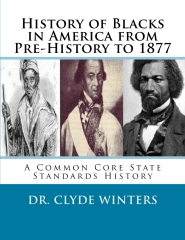Claims that my translation of the
Fuente Magna Bowl at
http://reocities.com/tokyo/bay/7051/Awen3a.htm
is false because I claimed that the original name for the Sumerian god:
Nammu was Ni-ash (
"unique awe") or Nia. Below is my decipherment
_____________________________________________________________________________
Decipherment of the Cuneiform Writing on the
Fuente Bowl
By
Clyde A. Winters
Below is a decipherment of the cuneiform writing on the Fuente Bowl
Cuneiform Writing on the Fuente Bowl
To translate the cuneiform I used Samuel A. B. Mercer's, Assyrian grammar with chrestomuthy and glossary (N.Y.:AMS Press,1966) to compare the signs found on the Fuente bowl with the cuneiform syllabary. To read the Sumerian text I used John L. Hayes, A Manuel of Sumerian: Grammar and text ( Malibu,CA:Udena Publications, 2000) and John A Halloran, Sumerian Lexicon, http://www.sumerian.org/sumerlex.htm .
I will translate the Sumerian cuneiform in panels 1 and 2 of the cuneiform text reading from right to left.
In the first panel there is no mention of Shamash the sun god. This is the Akkadian word for the sun god, the name of the sun god in Sumerian was Utu. Reading the text from right to left top to bottom we find the following;
Figure 1: Panel 1
Ti Kur kur kur kur (determinative for divine names) Nia (lit. ni-ash) (Figure 1)
Translation:
"Approach in the future (one) endowed with great protection the great Nia".
"This favorable oracle of the people to establish purity and to establish character [for all who seek it]".
This first panel is very interesting. There are three Proto-Sumerian signs in this panel. Here we also find the use of the divine determinative. Hayes, page 35 (figure 5a) discusses this sign.
The Sumerian sign used before divine names
I have interpreted the sign Ni-ash as Nia, because of the fact that when a syllable is joined to a consonant vowel form the adjoining sign becomes a single vowel. If we read the signs as Ni-ash it means: "unique awe".
The Sumerian goddess was Nammu, we know very little about this goddess because much of the knowledge about her was lost at the beginning of Ur111. According to Hayes she was recognized as "the mother who gave birth to heaven and earth", the primeval mother, who gave birth to the gods" (Hayes, p.35). This passage suggests that the original name for Nammu was Nia. The quote from Hayes makes it clear that Nammu-Nia was highly regarded and was worshipped as the main god before the rise of any other Sumerian gods.
In the second panel reading from right to left, top to the bottom we find the following:
Figure 2: Panel 2
Transliteration Panel 2:
Pa en ash sa tur
Translation:
"Sprout [oh] diviner the unique advise [at] the temple"
This translation of the first two panels of the cuneiform writing reads as follows:
"Approach in the future (one) endowed with great protection the Great Nia".
"[The Divine One Nia(sh) to] Establish Purity, Establish Gladness, Establish Character"
"[Use this talisman (the Fuente bowl)] To sprout [oh] diviner the unique advise [at] the temple".
Here we have panel 3, of the Fuente bowl. The signs on this panel are very interesting, as in the other panels we see a combination of Proto-Sumerian and cuneiform signs.
Panel 3
Reading from right to left, top to bottom. We have the following:
Zi esh
The righteous shrine
Esh esh esh esh
Anoint the shrine, anoint the shrine
Pap pa ge
The leader takes an oath [to]
Lu ta mi du lu ta
Establish Purity , a favorable oracle (and) Establish character
Bar nu ash
Open up a unique light [i.e., knowledge, for all]
Ash ti en
Wish for a noble life
The entire panel reads as follows:
"The righteous shrine, anoint (this) shrine, anoint (this) shrine; The leader takes an oath [to] Establish purity, a favorable oracle (and to) Establish character. [Oh leader of the cult] Open up a unique light [for all], [who] wish for a noble life".
Commentary
The cuneiform writing was interesting for two reasons. First, we find that these panels have proto-Sumerian symbols mixed with the cuneiform symbols. Secondly, whereas, the wedges of most Sumerian cuneiform text point leftward, the wedges of the Fuente cuneiform signs point rightward. This may result from the fact that in the Fuente text , the letters are read from right to left,
instead of left to right like the cuneiform text from Mesopotamia.
The passage on the cuneiform panels of the Fuente Bowl seems to be very similar to the Proto-Sumerian inscription on the right side of the bowl. This translation makes it clear that the passage complements my earlier decipherment of the Proto-Sumerian text also found on the left side of the
Fuente Bowl.
_____________________________________________________________________________
As you can see from this decipherment I cite where I got the translation of Sumerian terms and explain in detail my decipherment. The authors of the Wiki: at
http://www.palaeoseti.de/doku.php/suedamerika/fuente_magna , provide no Sumerian to dispute my translation of the Fuente bowl. This Wiki is a good example of how authors will use any means to deny the linguistic truth, that people from the ancient world were in the Americas before Columbus. You can not say a decipherment is wrong unless you provide specific linguistic evidence to dispute my claims since we have considerable knowledge about the Sumerians and their language.

